
William Croswell Doane was the 1st Bishop of the Episcopal Diocese of Albany in the United States. He was bishop from 1869 until his death in 1913.
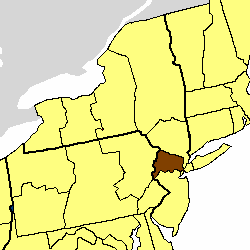
The Episcopal Diocese of Newark is a diocese of the Episcopal Church in the United States of America comprising the northern third of New Jersey in the United States. The Diocese represents the Anglican Communion, of which the Episcopal Church is a province, and presides over Episcopal parishes, missions, outreach ministries and schools in the New Jersey counties of Bergen, Essex, Hudson, Morris, Passaic, Sussex, Warren, and one church in Union County.
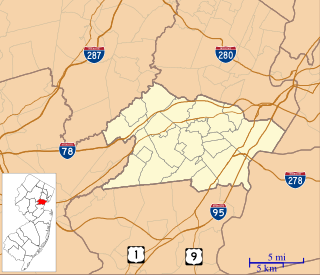
St. John's Episcopal Church is a historic Episcopal church located at 61 Broad Street in the historic heart of Elizabeth, New Jersey. Now part of the Episcopal Diocese of New Jersey headquartered in Trenton, it was founded in 1706 by missionaries of the Society for the Propagation of the Gospel, London, England. The current building, consecrated in 1860, is in the neo-Gothic style, with a 126-foot Gothic style tower.

Thomas John Claggett was the first bishop of the newly formed American Episcopal Church, U.S.A. to be consecrated on American soil and the first bishop of the recently established (1780) Episcopal Diocese of Maryland.
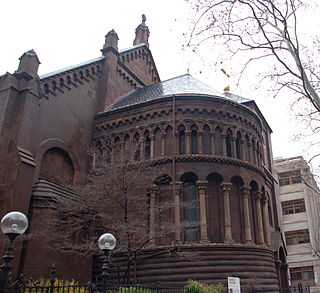
Saint Clement's Church is a historic Anglo-Catholic parish in Logan Square, Center City, Philadelphia. It is part of the Episcopal Diocese of Pennsylvania. The church, designed by architect John Notman, was built in 1856. It originally incorporated a spire more than 200 feet (61 m) tall; this was found to be too heavy for the foundation and was removed in 1869. In 1929, the church building, which includes the parish house and rectory, and weighs 5000 tons, was lifted onto steel rollers and moved forty feet west to allow for the widening of 20th Street. On November 20, 1970, Saint Clement's Church was listed on the National Register of Historic Places.

Grace Church in Newark (Episcopal) is an active and historic Episcopal Church in the Diocese of Newark. It is located on Newark, New Jersey's Broad Street where it has stood since 1837. Grace is a traditional church that worships in the Catholic tradition. Grace is notable for its architecture, music, and as the birthplace of the tune "America the Beautiful".
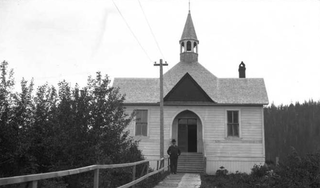
St. Philip's Episcopal Church is an historic Episcopal church located at 446 Church Street in Wrangell, Alaska, United States. Its frame vernacular-style church was built as the People's Church in 1903 by a Presbyterian congregation of Alaskan Natives under the direction of its minister, the Rev. Harry Prosper Corser. In 1905 the Rev. Mr. Corser and many of his congregation were received into the Episcopal Church by the Rt. Rev. Peter Trimble Rowe, the first bishop of the Episcopal Diocese of Alaska. Corser was later ordained an Episcopal priest and served the church which was consecrated at St. Phillip's until he retired in 1934. On May 6, 1987, the church was added to the National Register of Historic Places as Saint Philip's Episcopal Church.

The Episcopal presence in Canandaigua, New York began, formally, in February, 1799 with the formation of St. Matthew's Episcopal Mission. In 1814, St. John's Episcopal Church was organized and first met in the Ontario County, New York Court House in Canandaigua. St. John's erected a wooden church building in 1816. Bishop John Henry Hobart consecrated it that year. Steady congregational growth necessitated more space. This led to the razing of the first church and the constructing of the current larger stone Gothic building done in the parish church style popular in the 19th century. Emlen T. Littel of New York, who was also the architect of Zion Episcopal Church designed the building. This church was constructed in 1872 at a cost of $47,000 and consecrated in 1886. It contains several windows from the earlier wooden church, elaborate new stained glass windows imported from Europe, and one—The Parables Window—was designed by Daniel Cottier(1837–1891), who was considered an important influence on Louis Comfort Tiffany. In 1908, new hardwood floors, choir stalls, and an organ were installed. The parish house and a chapel were added at the same time. In 1964-65, an addition to parish house included classrooms, a new chapel, and a dining/ meeting room added to celebrate the church's 150th anniversary. Recent additions include a columbarium with a capacity of 136 niches and a memorial garden, outside the church. A capital campaign begun in 2017 allowed the parish to upgrade and improve five areas identified by parishioners as essential priorities.

Trinity Church is a historic Episcopal congregation located at 33 Mercer Street in Princeton, New Jersey. It is the largest Episcopal church in New Jersey.
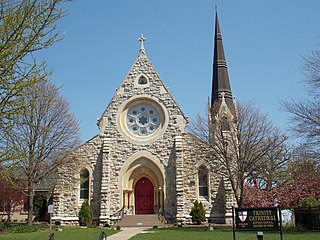
Trinity Episcopal Cathedral, formerly known as Grace Cathedral, is the historic cathedral in the Diocese of Iowa. The cathedral is located on the bluff overlooking Downtown Davenport, Iowa, United States. Completed in 1873, Trinity is one of the oldest cathedrals in the Episcopal Church in the United States. It was individually listed on the National Register of Historic Places in 1974. In 1983 the cathedral was included as a contributing property in the College Square Historic District, which is also listed on the National Register.
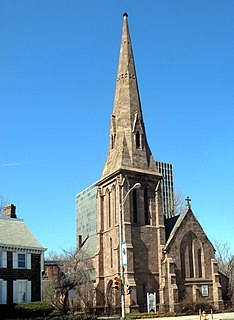
House of Prayer Episcopal Church and Rectory is a historic site at Broad and State Streets in Newark, Essex County, New Jersey, United States. The house was built in prior to 1725 and the church in 1849 and they were added to the National Register of Historic Places in 1972.
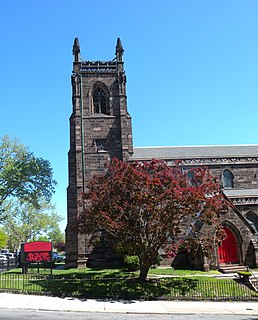
St. James' A.M.E. Church is a historic church located at High and Court Streets in Newark, New Jersey. Built in 1850 by architect John Welch and dedicated in 1854, it was originally called the High Street Presbyterian Church until 1926, when it was briefly disbanded. It was re-established as Bethel AME Church before being renamed Saint James' AME Church.

Trinity & St. Philip's Cathedral is a historic church at Broad and Rector Streets in Newark, Essex County, New Jersey, United States. It is the seat of the Episcopal Diocese of Newark.

Grace Church or Grace Episcopal Church is a historic Episcopal Church located at 600 Cleveland Avenue in Plainfield, Union County, New Jersey, United States. It was added to the National Register of Historic Places on May 10, 2002 for its significance in architecture, art, and music from 1892 to 1930.

St. John's Episcopal Church is a parish church in the Episcopal Diocese of Iowa. It is located in Keokuk, Iowa, United States. It was listed, together with the parish hall, on the National Register of Historic Places in 1989.
Bishop Reginald Thomas Jackson is the 132nd elected and consecrated bishop of the African Methodist Episcopal Church. Jackson is the husband of Christy Davis-Jackson, Esquire and the father of two children, daughter Regina Victoria Jackson and son Seth Joshua Jackson. Jackson received a bachelor's degree in history from Delaware State University and a Masters of Divinity from the Interdenominational Theological Center.

The Cathedral Church of the Nativity is an Episcopal cathedral in Bethlehem, Pennsylvania, United States. It is the seat of the Diocese of Bethlehem. In 1988 it was listed as a contributing property in the Fountain Hill Historic District on the National Register of Historic Places.

Christ Church, Newton, also known as Christ Episcopal Church, is a Christian house of worship located on the corner of Church Street and Main Street in Newton, New Jersey. It is a parish overseen by the Episcopal Diocese of Newark, a diocese of the Episcopal Church in the United States of America. The congregation first met on 28 December 1769 and was granted a charter by New Jersey's last Royal Governor William Franklin on behalf of Britain's King George III. Christ Church is the oldest church in Newton and the third oldest parish in the Diocese of Newark.

St. Peter's Episcopal Church is an active and historic Episcopal church in the Diocese of Newark in Morristown, New Jersey. Located on South Street, St. Peter's congregation has roots going back to the 1760s. Officially founded in 1827, with the current building consecrated in 1911, it is notable for its gothic-revival architecture, medieval interior and fine stained glass. St. Peter's congregation has traditionally worshipped in the High Church tradition.
St. Barnabas' Church was a Church of Ireland church on Upper Sherrif Street, East Wall, in Dublin's docklands. It was sometimes called the Mariners Church.





















